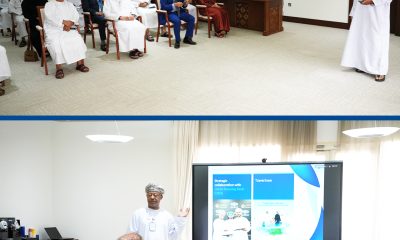Economy
Modi needs rivals’ help to meet $3 trillion infra target

(Bloomberg) –Prime Minister Narendra Modi must invest trillions of dollars on roads and other critical infrastructure if he’s to pull India’s economy out of its slump, with at least half coming from provincial governments that are out of his control.
India will need to spend 235 trillion rupees ($3.3 trillion) on infrastructure over the coming decade to return economic growth rates to more than 7.5%, according to Crisil Infrastructure Advisor. That means Indian states will have to more than triple their contributions from the current decade, it said.
“With private investments tepid in recent years, and fiscal limitations on central spending,” states will need to step up contributions from about 41% now, Sameer Bhatia, president of the S&P Group company, said in the report published Tuesday. “Unless states contribute nearly 50% of infrastructure investments, India’s build-out momentum could taper sharply.”
Read: How UAE is likely to propel India’s $5-trillion economy target
That’s easier said than done. Indian states, too, have deteriorating public finances and some, like the richest state of Maharashtra, face political uncertainty after Modi’s party fared worse-than-expected in elections this month and no party won a clear majority.
Read more: Four-day-old BJP Government in India’s Richest State Falls
“As slowing growth and continued infrastructure spending are likely to keep state-level deficits elevated, we expect the central government will continue to face challenges in achieving its fiscal consolidation targets,” Gjorgji Josifov, an analyst at Moody’s Investors Service, wrote in a report published Wednesday.
Earlier this month the rating agency cut India’s credit rating outlook to negative, citing a litany of problems including a worsening shadow banking crisis and a prolonged economic slowdown.
Crisil recommends that frontrunner states such as Maharashtra and Gujarat must attract more private investments to counteract a probable slowdown at recent high spenders including Rajasthan and Uttar Pradesh.
Read: Modi’s Goal of a $5 Trillion Economy By 2025 Is at Risk
Power transmission and the highway sector remained the most attractive infrastructure assets for investors in 2019, while renewable energy was dragged down by tariff caps, according to Crisil’s report.
-

 Alamaliktistaad Magazines2 months ago
Alamaliktistaad Magazines2 months agoAlam Al Iktisaad – September 2025 Edition
-

 Magazines2 months ago
Magazines2 months agoOER – September 2025 Issue
-

 News2 months ago
News2 months agoKitchenomiKs Secures Investment of US$3.2M Led by Jasoor Ventures
-

 News2 months ago
News2 months agoCent Capital, AI Finance App by ex-AWS Strategist ‘The Beast of Bay Area,’ Launches to End Financial Anxiety, Hits $1M AUM
-

 News2 months ago
News2 months agoOman Inaugurates ‘Hadatha’ – Its All-New Cybersecurity Center
-

 Banking & Finance2 months ago
Banking & Finance2 months agoOman Arab Bank Highlights Its Ongoing Strategic Initiatives and Future Plans
-

 News2 months ago
News2 months agoIEA Expects Global Oil Market to Remain Oversupplied in 2026
-

 Energy2 months ago
Energy2 months agoWLGA Middle East LPG Summit & Expo 2025 to be held at OCEC on November 10 and 11






























